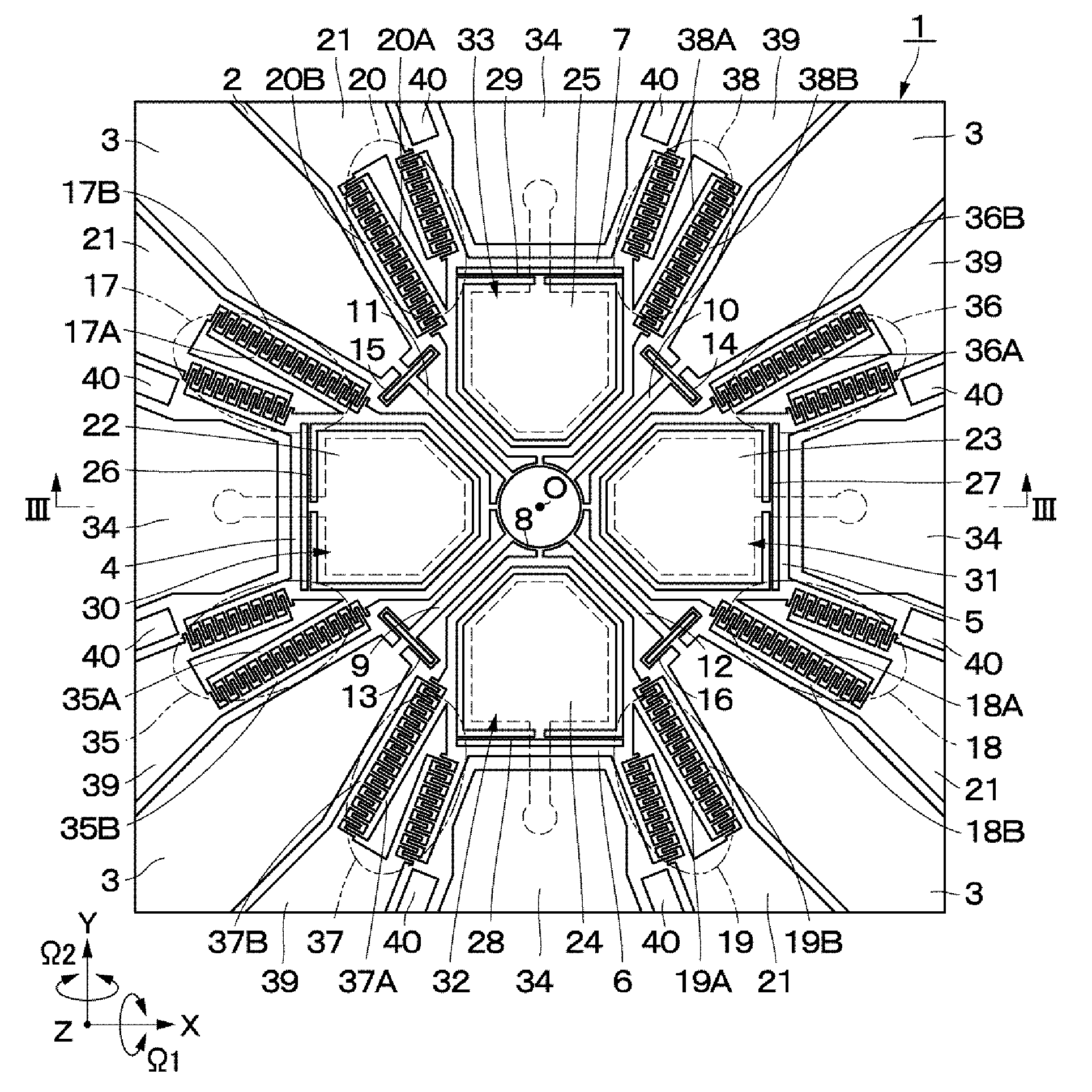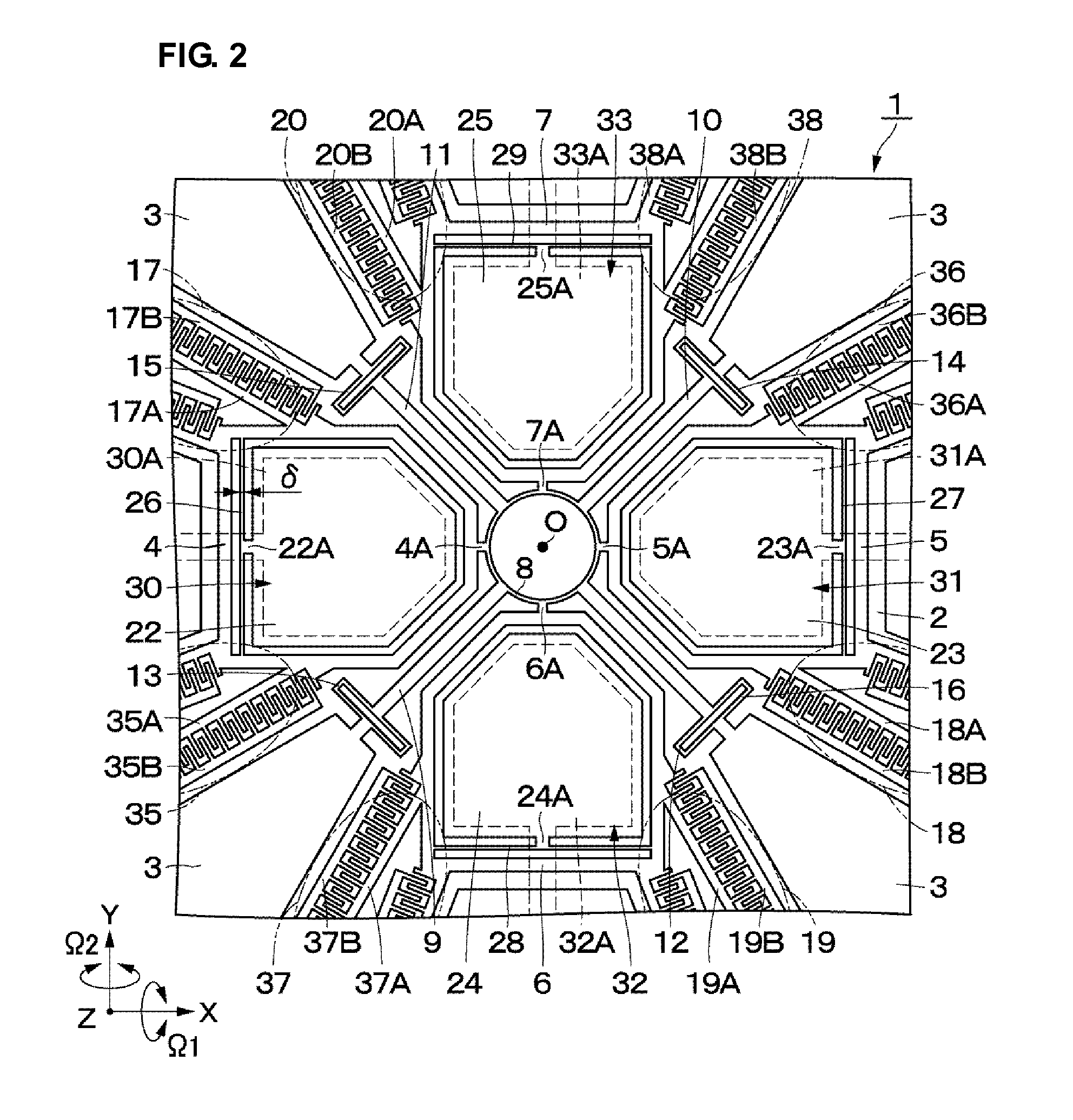Angular velocity sensor
a technology of angular velocity and sensor, which is applied in the direction of acceleration measurement using interia force, turn-sensitive devices, instruments, etc., can solve the problems of large difference in vibration generation among the mass portions, increase of noise, increase of the influence of vibration leakage, etc., and achieve the effect of stabilizing the resonance sta
- Summary
- Abstract
- Description
- Claims
- Application Information
AI Technical Summary
Benefits of technology
Problems solved by technology
Method used
Image
Examples
Embodiment Construction
[0060]Angular velocity sensors according to preferred embodiments of the present invention will be described in detail below with reference to the accompanying drawings.
[0061]FIGS. 1 to 6 illustrate an angular velocity sensor 1 according to a first preferred embodiment of the present invention. As illustrated in FIGS. 1 to 6, the angular velocity sensor 1 includes a base plate 2, driven mass portions 4 to 7, a coupling beam 8, connecting portions 9 to 12, driven beams 13 to 16, vibration generating portions 17 to 20, detecting mass portions 22 to 25, detecting beams 26 to 29, displacement detecting portions 30 to 33, and vibration monitoring portions 35 to 38.
[0062]A base plate 2 defines a base portion of the angular velocity sensor 1. The base plate 2 is preferably a rectangular or substantially rectangular flat plate made of, e.g., a glass material. The base plate 2 extends horizontally in, e.g., X- and Y-axis directions among three X-, Y- and Z-axis directions that are perpendicu...
PUM
 Login to View More
Login to View More Abstract
Description
Claims
Application Information
 Login to View More
Login to View More - R&D
- Intellectual Property
- Life Sciences
- Materials
- Tech Scout
- Unparalleled Data Quality
- Higher Quality Content
- 60% Fewer Hallucinations
Browse by: Latest US Patents, China's latest patents, Technical Efficacy Thesaurus, Application Domain, Technology Topic, Popular Technical Reports.
© 2025 PatSnap. All rights reserved.Legal|Privacy policy|Modern Slavery Act Transparency Statement|Sitemap|About US| Contact US: help@patsnap.com



